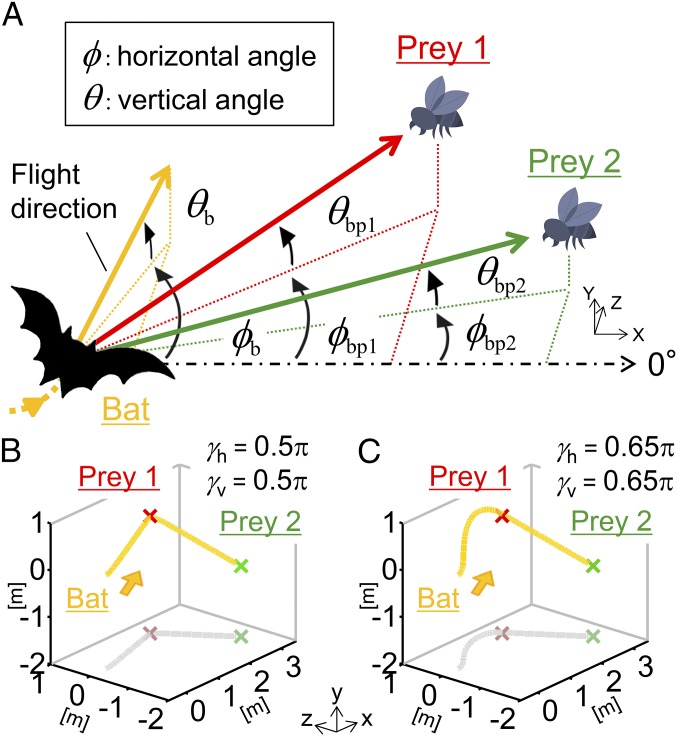Fig. 1.
Model of bat’s flight dynamics. (A) Schematic diagram to mathematically model the flight dynamics of a bat approaching two prey items in 3D space. Horizontal and vertical angles are represented by ϕ and θ, respectively. The flight direction of the bat (ϕb and θb, the yellow arrow) is assumed to be adjusted in the directions leading from the bat to prey 1 (ϕbp1 and θbp1, the red arrow) and to prey 2 (ϕbp2 and θbp2, the green arrow). (B and C) Examples of numerical simulations of our mathematical model. When γh and γv are equal to 0.5π (αh = αv = 1, βh = βv = 0), the bat exhibits a straight-ahead approach to prey 1 (B). When γh and γv are 0.65π, the bat takes a circuitous flight path to approach prey 1 and then prey 2 (C). After capturing prey 1, it is assumed that the bat approaches prey 2 in a linear manner (αh = αv = 0, βh = βv = 1).

